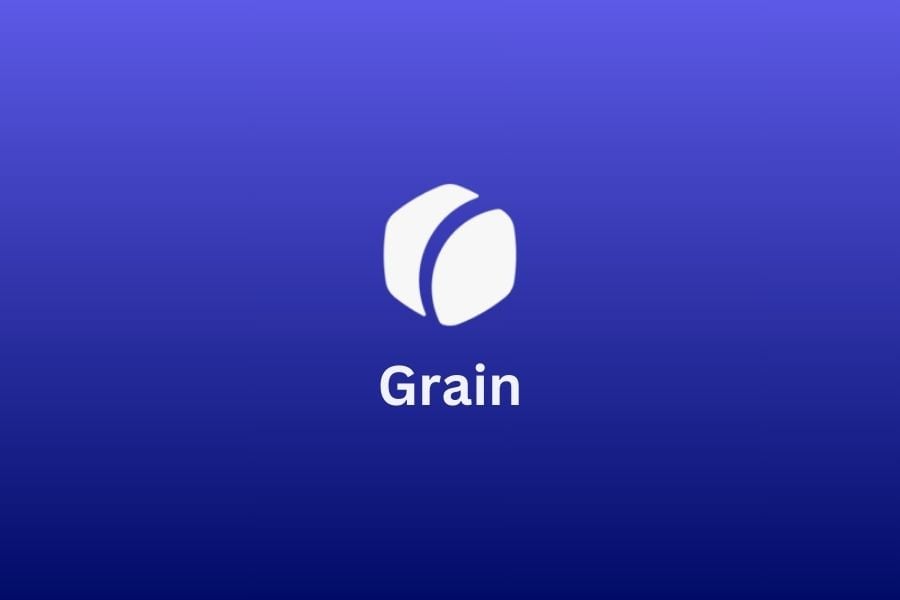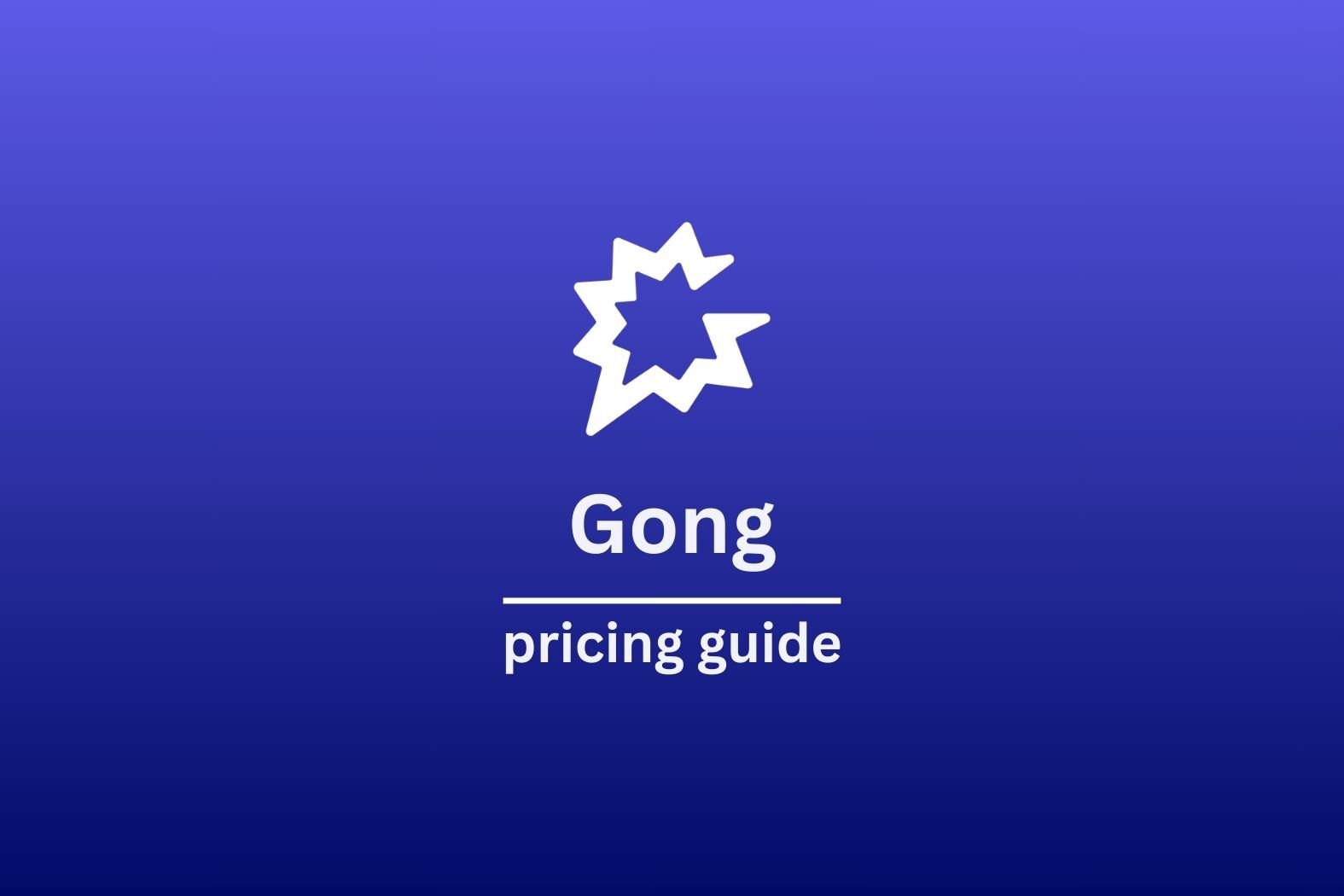Grain claims to make conversational intelligence simple so you can focus on the important things: coaching your team and closing more deals. While it definitely does a good job, is it the best in the market, or are there some Grain alternatives that offer a bigger bang for your buck?
This is what we aim to find out here. We’ve compiled a list of Grain competitors so you don’t have to. All of them are forces to be reckoned with, but each business only has room for one meeting recorder. Which one is right for you and your business?
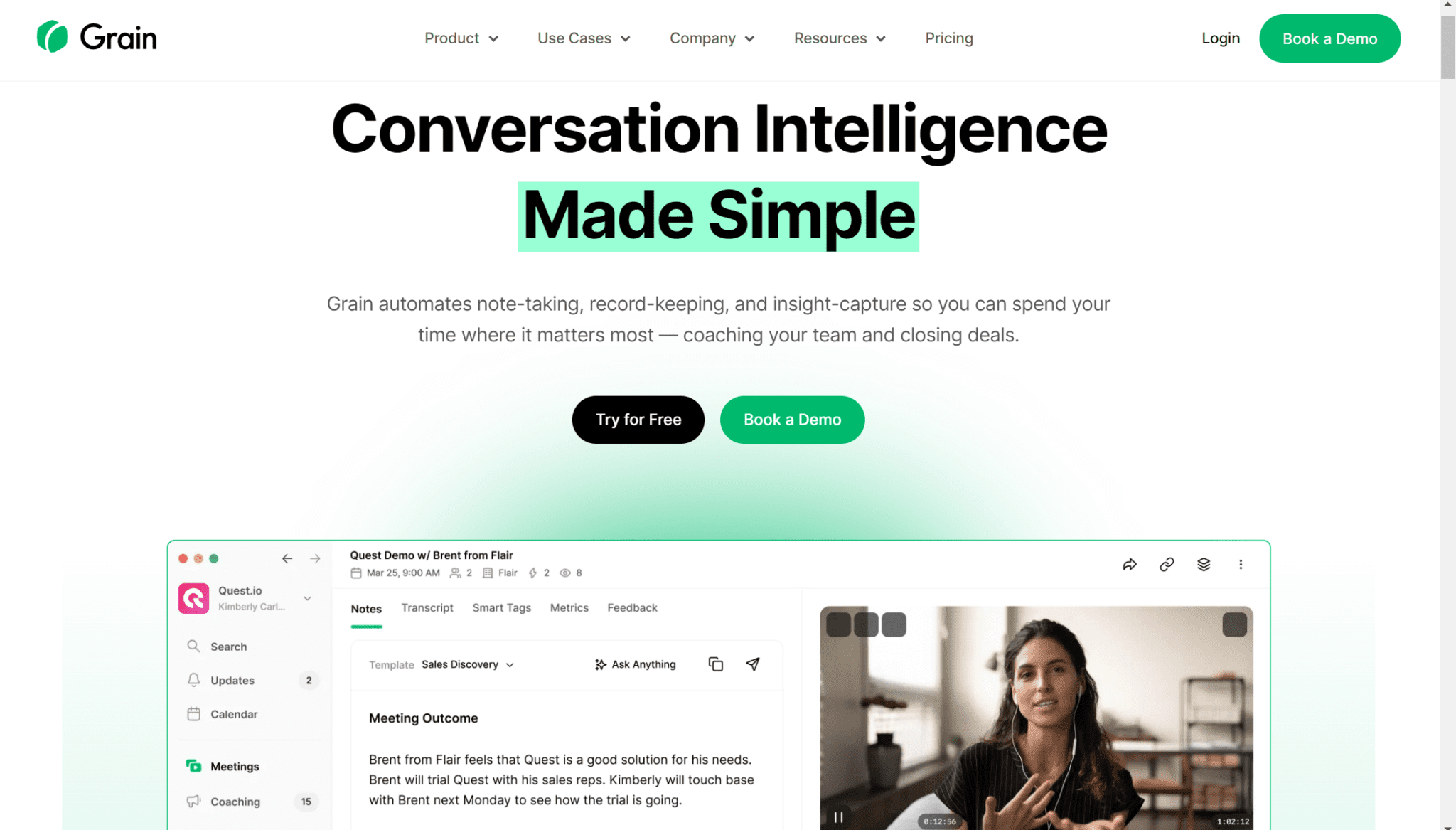
Grain Review
If you’ve come here looking for the best cereal to make bread, you’re in the wrong place. Unless, of course, by bread you mean more profit from your sales calls. We’re talking about the AI meeting recorded, Grain.com.
In short, it’s a bot that joins your meetings, records them, transcribes them, and then makes it incredibly easy for you to actually use the transcripts and videos afterwards. Otherwise, there’s not really much point. You can create clips, add comments, make notes and even get AI summaries about your meetings. You can ask Grain’s intuitive AI questions to get instant answers about the meeting too.
What makes it great for sales teams?
Transcripts
Grain provides live transcriptions, filler word removal, and translations into more than 20 languages. It automatically detects who’s speaking and even lets you build your own custom vocabulary so that jargon-heavy meetings can still be recorded and searched accurately.
It’s super easy for you to search your meeting’s transcript during or after the call. You can also make use of Grain’s AI and get answers, insights, and summaries immediately.
All of these features are accessible with an easy-to-use UI which means you’ll never get lost.
Shareability
Grain makes calls easy to share. No one wants to sift through hour-long meetings, and with Grain you don’t have to. Create bite-sized snippets and share them with colleagues and stakeholders in one click. Whether it’s a snippet from a sales call or a highlight from a user research interview, Grain makes sharing the voice of the customer easier than ever.
Integrations
While Grain has some top quality integrations, it certainly lacks on the quantity side of things. Offering a grand total of seven integrations, Grain is playing catch up to its alternatives in this regard.
The integrations it offers can be seen below.

To be clear, Grain integrates with:
- Zoom
- Slack
- HubSpot
- Aircall
- Salesforce
- Productboard
- Zapier
The Zapier integration is probably the most vital there as it partially makes up for the lack of native connections. With Zapier, you can link your Grain account with many other third-party platforms. It just adds an extra step.
Why Change?
So far, so good. Why would anybody be searching for Grain alternatives? Sounds like a great little sales tool to help out with the 10 gazillion meetings sales managers have every week, not to mention the individual reps’ sales calls, or the painstaking interviews and subsequent analysis that user researchers are subjected to.
Weak Free Plan
Firstly, Grain’s free plan is acceptable, but by no means strong. If you want to try before you buy, Grain leaves most of its features out. Sure, there’s a free trial. But it’s timed and adds unnecessary pressure to your buying decision.
The free plan only gets you 20 meetings’ worth of transcripts.
Integrations
While the integrations it has are great, there are two downsides.
- They’re behind paywalls. The Slack, Productboard, and Zapier integrations aren’t unlocked until the Starter Plan ($15 per month), while the Aircall, Salesforce, and HubSpot integrations aren’t unlocked until the Business Plan ($29 per month).
- There’s only 7. Some of the Grain alternatives on this list have thousands of native integrations. Businesses that already have a suite of work tools might struggle to find a way to integrate their tools seamlessly, defeating the purpose of Grain’s automation in the first place.
Limited Coaching
Grain, despite having vast swathes of meeting data that can be used for in-depth analysis and training, only offers a primitive form of coaching. There’s no customizable playbooks or specific sales coaching offered, but to their credit, there is the option to get hard data on things like a sales rep’s talk time so they know when too much is too much.
Weak Support Offerings
Grain’s priority support doesn’t kick in until the Enterprise Plan. Any users in lower plans wanting to contact someone for support will have to do so via email. There’s no chat option and emails can take days to get a response.
How does Grain score on G2?
While Grain scoring is quite positive, there are quite a bunch of downsides highlighted by several users:
- Feature Limitations:
- Lack of live audio transcription and support for multiple languages in meetings.
- Some issues with transcription accuracy, especially with accents.
- Limited functionality for managing shared folders and setting default behaviors for sharing.
- User Experience Issues:
- Filtering tagged clips/notes could be more intuitive.
- The platform sometimes struggles with joining webinars or integrating with additional VoIP systems.
- Cost and Accessibility:
- Some users find the pricing of the business plan high for SMBs or startups.
- Limited options in the free version and the need for additional educational resources.
The Top 4 Grain Alternatives
Let’s take a deep dive into Grain’s competitors and separate the wheat from the chaff…
1. tl;dv
tl;dv takes conversational intelligence to the next level. It’s gone far past being a simple meeting recorder. Yes, it records meetings. Yes, it transcribes them. And yes, it even instantly and automatically sends AI summaries to all participants as soon as the call ends. But these features are just the foundations for something far greater. In fact, they’re so basic to tl;dv that you can get unlimited call recordings and transcripts for free. Forever.
You can even integrate it with Slack, emails, and your calendar on the free plan too. That’s because the value goes far beyond the foundational features.
Imagine: you’re a sales manager that wants to keep track of a certain objection that has been cropping up across multiple sales calls with multiple different sales reps. tl;dv offers multi-meeting intelligence, meaning you can get recurring reports about specific information across ALL company calls.
In addition to that, tl;dv offers sales coaching playbooks and templates so that you can improve your sales performance with hard evidence. Its innovative AI reviews your sales reps’ speaking time, the amount of questions asked, and the context of the conversation, and provides suggestions for how to improve.
How Does tl;dv Compare to Grain?
For starters, tl;dv solves Grain’s three main drawbacks.
- Free plan. tl;dv has an industry leading free plan, offering up unlimited call recordings, transcripts, and viewers without needing to spend a single cent. The majority of core features are completely free too, from timestamping to making clips. You even get a limited amount of AI features.
- Integrations. tl;dv has over 5,000 native integrations, marking it as the best Grain alternative for those that prioritize seamless communication between all their work tools.
- Coaching. As mentioned, tl;dv’s AI makes use of the insights in your sales call recordings to show you where to improve. Grain offers a basic version of this that highlights talk-to-listen ratio, but it doesn’t offer a range of customizable playbooks like tl;dv.
- Dialect support. tl;dv supports dozens of different dialects. This makes the transcripts more accessible and accurate to teams with heavy regional accents.
- Customer support. tl;dv offers a free online chat to all users, making it easy to get help when you need it. Priority support is unlocked in the first paid plan: Pro ($18 per month).
To see how tl;dv stands up against Grain comprehensively, check out our in-depth comparison: tl;dv vs Grain.
Let’s make the tl;dv benefits even clearer:
tl;dv Pros
- Free AI Integration: tl;dv capitalizes on top-of-the-range AI to provide summaries, notes, and automatic speaker detection.
- Free and Instant Translations: tl;dv’s transcriptions are available in more than 40 languages for Zoom, MS Teams, and Google Meet.
- Incredible Free Plan: Unlimited free recordings and transcriptions of Zoom, MS Teams, and Google Meet calls.
- Easy to Use: tl;dv’s sleek design makes it super easy for beginners and experts alike.
- Multi-Meeting Intelligence. Schedule recurring reports to get insights from multiple meetings at once, delivered straight to your inbox.
- Sales Coaching. Upgrade your sales team using insights from your sales calls. Improve objection handling and use templates or custom playbooks to personalize your coaching strategy.
- Timestamps and Tagging Features: Timestamp your meeting highlights to quickly jump back to specific moments in the call. It also features the ability to tag colleagues at specific meeting moments so they get an email with a link straight to their inbox.
- 5,000+ Integrations: Push timestamps and meeting clips directly to Notion, Slack, HubSpot, Salesforce, and 5,000+ more via native integrations.
- Create Clips and Highlights: Scan your library and make clips and highlight reels to condense insights.
- Intuitive Library: Search your meetings library for keywords in transcripts to quickly find what you’re looking for.
tl;dv Cons
- Compatibility: Not yet available for Webex or BlueJeans.
Pricing
tl;dv’s free plan solidifies its place at the top of this list of Grain alternatives. You can get started today with no strings attached. Plus, depending on which region of the world you’re in, you can get up to a 40% discount on the paid plans!
Free Plan Features
- Unlimited video recordings and transcripts.
- Record Google Meet, Zoom, and MS Teams calls.
- Transcribe in 40+ languages
- Unlimited AI moment summaries
- 10x AI Meeting Notes
- 10x Ask tl;dv AI
- 10x AI Multi-Meeting Reports
- Slack, Email, and Calendar integrations
- Set timestamps and highlights
- Create and share clips
- Automatic speaker recognition
- 3 monthly uploads
tl;dv’s paid subscriptions unlock 5,000+ integrations, sales coaching playbooks, limitless multi-meeting intelligence, recurring reports, analytics, downloadable recordings, customizable share settings, priority customer support, and much, much more.
See the full details here.
tl;dv vs Grain
We’ve summarized the number one Grain alternative and its features into a nice, neat table for a comparison overview.
| Grain | tl;dv | |
| Free Plan? | 20 meeting recordings and transcripts | Unlimited recordings & transcripts |
| AI? | Yes, for summaries, basic notes, and limited coaching | Yes, for summaries, recurring reports, multi-meeting intelligence, and powerful sales coaching (including many features for free) |
| Price of Paid Plans | $15-29+ / month | $18-59+ / month |
| Google Meet? | Yes | Yes |
| Zoom and MS Teams | Yes | Yes |
| Records Video? | Yes | Yes |
| Automated Transcription? | Yes (20+ languages) | Yes (40+ languages) |
| Speaker Recognition? | Yes | Yes |
| Timestamp moments in real-time? | Yes | Yes |
| CRM Integrations? | Yes (HubSpot and Salesforce unlocked with the Business plan) | Yes (HubSpot, Salesforce, and dozens more unlocked with the Pro plan) |
| Slack Integration? | Yes ($15 per month) | Yes (Free) |
| Search through all meeting transcripts | Yes | Yes |
| Tagging Colleagues? | No | Yes |
| Viewing Analytics | Yes | Yes (even on Free) |
| Create Clips? | Yes | Yes (even on Free) |
| Speaking time analysis for reps | Yes | Yes |
| Listen to keyword-alerts | No | Yes |
While Grain is a pretty special meeting tool, we think tl;dv more than pips it here. tl;dv takes what you can do with AI meeting assistants to an entirely new level, and is only strengthened by its generous free plan.
It boils down to this: tl;dv can do everything Grain does, and far more, for less.
2. Fathom
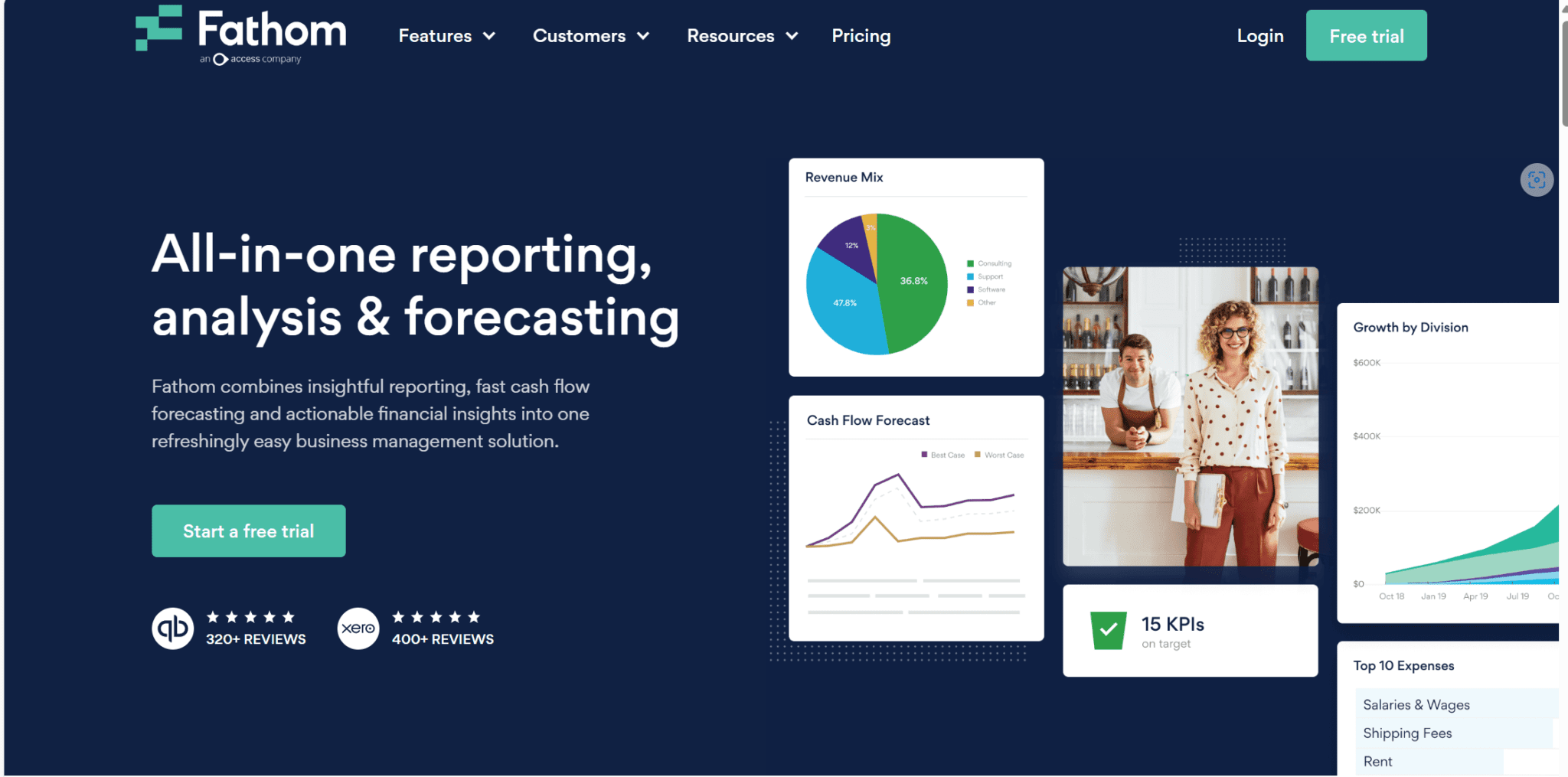
Fathom is another great Grain competitor that also comes with a competitive free plan. Known for being an excellent AI meeting transcription tool, Fathom quickly and automatically creates summaries of meetings, including action item summaries so you can make decisions faster and more efficiently. Like Grain, it provides real-time transcriptions which can be a huge bonus if you want to take notes on-the-go.
You can also use Fathom to organize your insights across popular documentation tools like Google Docs, Notion, or Asana with ease. By generating highlights mid-call, you can ask the powerful AI to summarize them in a simple click. You can instantly sync your mid-call notes with the rest of your research notes, streamlining your work process.
The meeting, along with all notes, highlights, and clips, will be available to download as soon as the call ends.
Fathom Pros
- Automatic summaries. Fathom automatically generates summaries of meetings, including action items.
- Easily Shareable. It’s designed to share data across multiple platforms.
- Powerful AI. Generate highlights mid-call and then get Fathom’s AI to summarize them with a simple click.
- Download instantly. Meetings and transcripts are available to download instantly.
- Good free options. It’s free for personal use and has a 2 week free trial for the team version.
Fathom Cons
- Compatibility. Fathom is only available with Zoom, MS Teams, and Google Meet.
- Limited Translations. Only available in 6 languages.
- Complicated Pricing. The pricing for Fathom can be quite confusing compared to other Grain alternatives.
Pricing
Fathom is completely free for personal use, making it one of the top free plans out of all the Grain competitors. For use in teams, which is where it’ll be most essential for sales managers, Fathom requires you to get a paid plan. There is a free trial for this plan, but after the trial runs out, you’re left without any options. This paid plan starts at $50 per month and is priced on an odd “per company” basis.
Grain vs Fathom
Fathom is definitely a better place to start if you’re just looking to test the tools out. Fathom’s individual free plan gives everything. Grain doesn’t even offer basic Slack integrations for free, let alone any of their advanced AI features.
For a comprehensive comparison of Fathom and the number one meeting recorder on this list, tl;dv, see our overview: tl;dv vs Fathom.
3. Avoma
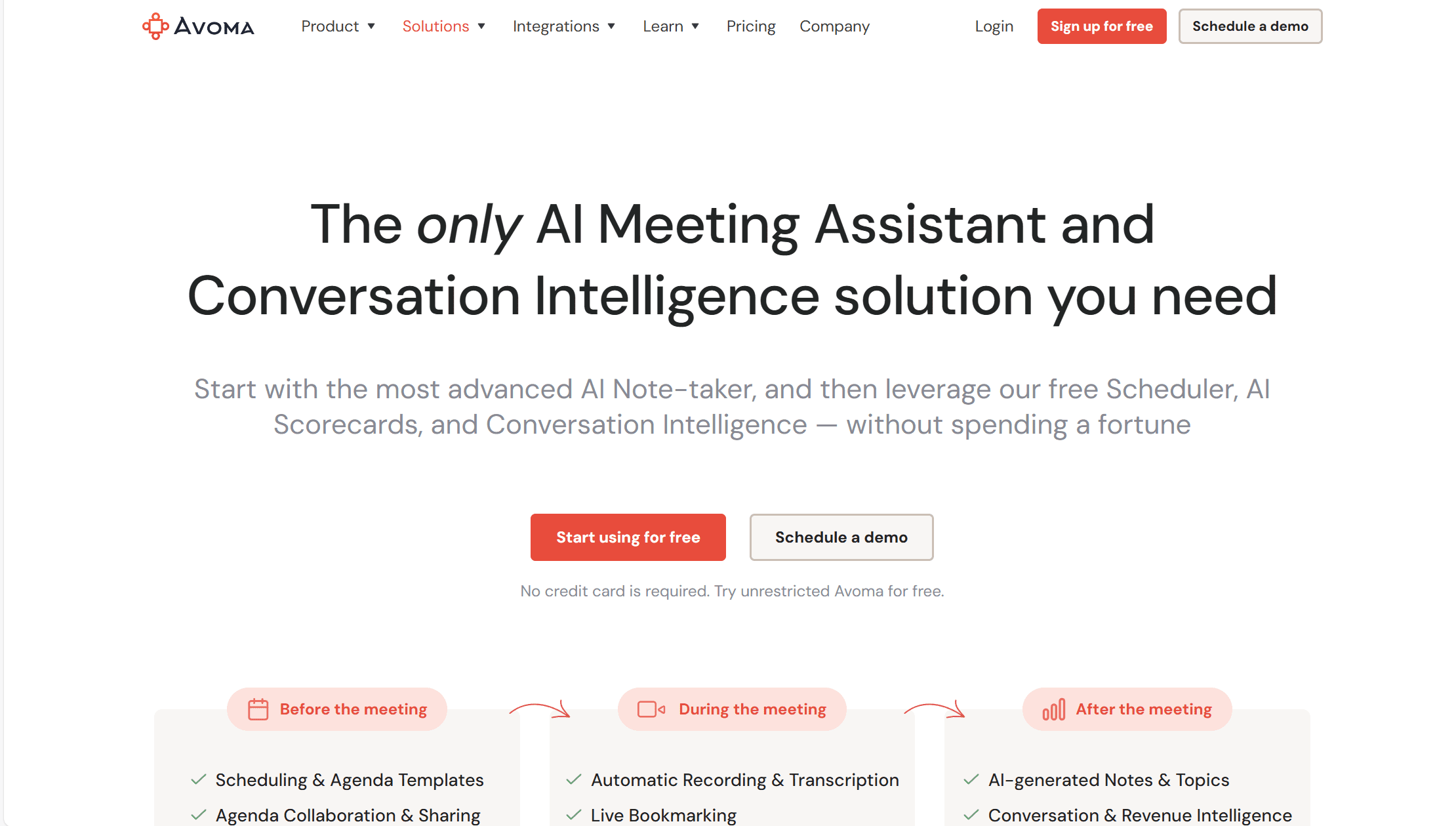
Avoma talks a big game. They claim to be the only AI meeting assistant you need. Are they all talk, or is Avoma the Grain competitor you’ve been waiting to get your hands on?
Well, like tl;dv, Avoma has taken the primary use cases of AI meeting assistants and ran into the future with them. It has competitive conversational intelligence, sales coaching, and even revenue intelligence.
Like with tl;dv, Avoma’s notes are searchable so you can always find exactly what you’re looking for. It’s also compatible with 8 different video conferencing platforms, the most of any AI meeting assistant on this list. That means that even if your team is using GoToMeeting or Bluejeans, you won’t have to switch.
Avoma Pros
- Sales Coaching and Playbooks. Avoma offers playbooks, templates, and dashboards to improve your sales reps’ skills.
- Revenue Intelligence. Deal intelligence, deal risk alerts, and trend analytics offer cutting edge insights.
- Conversation Intelligence. Analyze calls, track keywords, questions, and speaking patterns to maximize sales calls.
- Note-taking. Take notes in real-time on both video and audio calls.
- Search function. Easily search your transcripts and notes to find what you’re looking for.
- Compatibility. Works with Google Meet, Zoom, MS Teams, and more
Avoma Cons
- Limited integrations. Avoma has more integrations than Grain, but they’re fairly limited in the grand scheme of things.
- Weak free plan. The free plan is weaker than other Grain alternatives.
Pricing
Avoma’s Starter Plan begins at $19 per user per month which offers just 2,400 minutes of transcription per month. The Plus Plan rockets up to $49 per month and unlocks CRM integrations and unlimited transcriptions (something tl;dv offers in its Pro Plan). The Business Plan will set you back $79 per month and unlocks AI scorecards as well as advanced conversation and revenue intelligence.
Avoma also has an Enterprise Plan, priced at $129 per month.
Free Plan Features
- Recording & Transcription (300 mins per month)
- Limited AI-generated Notes
- Collaborative Note-taking
- Agenda Preparation
- Unlimited 1:1 Scheduler
Avoma also offers a free 14-day trial for any of its plans so you’re free to test out its advanced features over any 2-week period. As for the free plan itself, it’s actually worse than Grain’s. This can be a big hindrance for teams that want to try before they buy, but it’s not the end of the world.
Grain vs Avoma
Avoma’s conversation intelligence is great, far surpassing anything Grain currently offers. Similarly, its sales coaching, revenue intelligence, and number of integrations set it apart from Grain in terms of advanced features.
However, with those advanced features comes advanced prices. It’s priced above most of Grain’s competitors and also lacks quality in its more affordable plans.
4. Gong
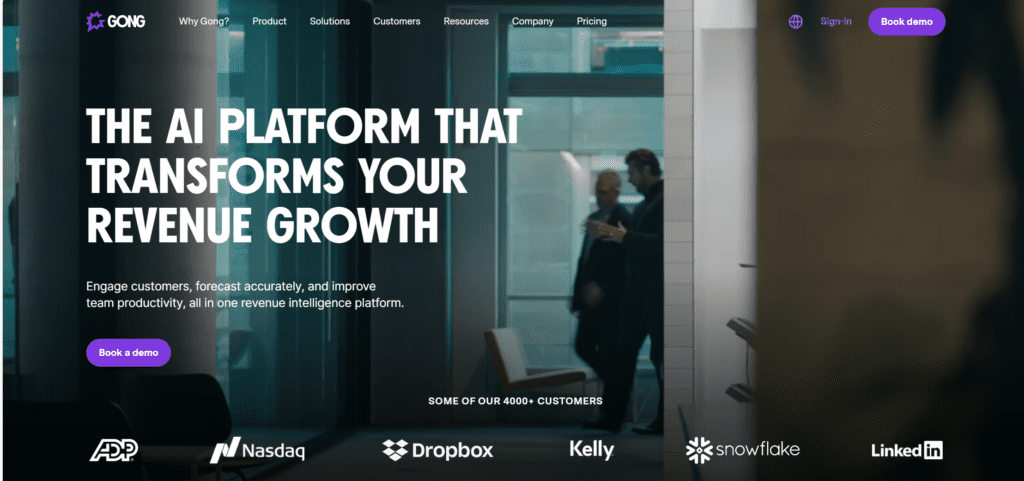
Let’s not beat around the bush about it, Gong is a beast. The only reason Gong isn’t higher in this list is because it can be ridiculously expensive. Unless your team requires the super advanced features at any cost, it’s out of most team’s budgets.
With Gong’s super-charged AI analytics, it helps sales reps enhance their skills, identify high-potential leads, and improve overall sales performance. Gong is hyper-specialized for sales teams, regardless of how big they are. It’s joining your meetings for one purpose and one purpose only: to increase your sales.
Most of the other Grain competitors on this list are multi-faceted, focusing on remote work and seamless asynchronous collaboration with some specialized features for sales teams. Gong is sales or nothing. This can be both bad or good; it depends on your business needs.
Gong Pros
- Integrations. Gong has hundreds of integrations that make connecting your workspaces seamless.
- Revenue intelligence. Gong’s state-of-the-art revenue intelligence allows you to forecast sales and help with deal execution.
- Sales coaching. Gong offers custom playbooks, scorecards, templates, and objection handling training.
- Sentiment analysis. Gong’s AI analyzes customer sentiment to bring you closer to closing the deal.
Gong Cons
- Expensive. Not only is Gong’s pricing hidden behind a sales call, it’s notoriously high as the platform is built for enterprises.
- Heavy sales focus. Gong is so focused on sales teams that it doesn’t really make sense to use it at all if you’re not going to maximize the use of its sales features.
- Long-winded onboarding. To get access to Gong, you must jump through hoops.
- Intrusive recommendations. Some reviewers suggest that Gong’s recommendations on how to improve your sales pitch can be annoying and unwanted.
Gong Pricing
To access Gong’s pricing, you need to arrange a sales call with their team. While this might sound like an unnecessary hurdle (which it is), it’s done to let you know from the get-go that this is an enterprise-level platform.
It’s been reported that some plans cost as much as $1,600 per user annually, for a maximum of 49 users. That means if your team has 49 members, you’ll be paying $78,400 before you’ve even made a single sale.
In short, Gong’s pricing is for the top-tier players. This is why it comes last on our list.
Grain vs Gong
There’s no doubt about it: Gong is the better tool. If both tools were the same price, Gong would be the choice every day of the week. However, Gong is built for enterprises and, as such, is priced accordingly. Unless you’re looking for a Grain alternative because you specifically want the best of the best when it comes to sales coaching, revenue intelligence, conversational intelligence, and overall sales features, then you’re better off looking elsewhere.
If you’re curious about how tl;dv stacks against Gong, check our detailed comparison – it’s a worth it, believe me.
The Verdict
Grain alternatives are all over the place, but it really depends on your business needs for what you want to replace it with. Grain is a great tool on its own, but it falls behind alternatives like tl;dv, Fathom, Avoma, and Gong.
tl;dv is the best all-round tool in terms of bang for your buck. It has the best free plan and the greatest valued paid plans. Fathom is a good Grain alternative with a solid free plan for individuals. Gong is a wise choice if you’re looking to go all-in on sales, regardless of initial price. Avoma bridges the gap between tl;dv’s sales coaching and conversational intelligence and Gong’s powerhouse of a sales suite, for a similarly bridged price.
Ultimately, the decision depends on you and your business needs.

